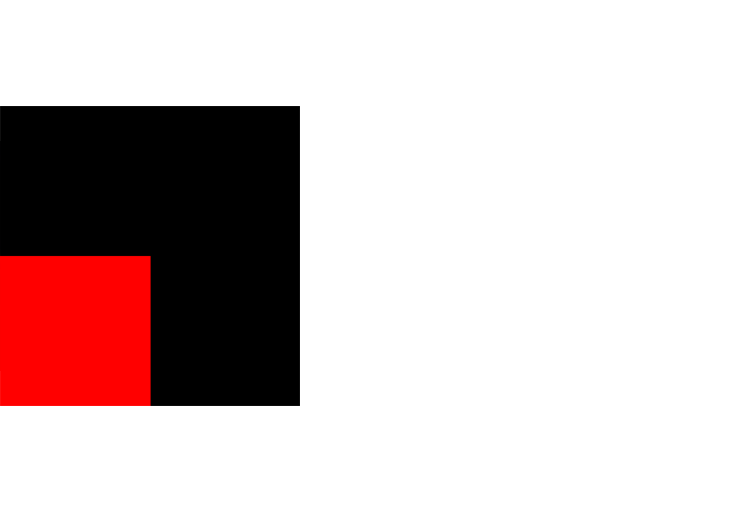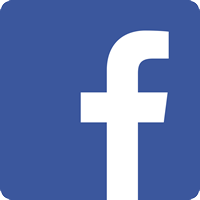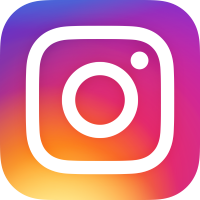SWG Kunstlexikon
GÜNTHER UECKER
Beitrag in Bearbeitung!
KUNSTWERKE GÜNTHER UECKER
Kunst nach 1945 | Günther Uecker | Städel Museum | Frankfurt | Im jüngsten Film unserer Reihe zur Gegenwartskunst im Städel begleiten wir den ZERO-Künstler Günther Uecker bei der Installation seiner kinetische Bodenskulptur „Sandmühle“ (1970). Die Arbeit wurde auf Initiative von Mitgliedern des Kuratoriums und des Vorstandes der Freunde der Schirn und des Städelkomitees 21. Jahrhundert erworben. Bevor der Ankauf des Schirn-Freundeskreises ab Februar 2012 im Städel-Erweiterungsbau zur Aufführung gebracht wird, drehte die Sandmühle Anfang September ihre Runden in der Schirn Kunsthalle. Dort wurde sie vom mittlerweile über 80-jährigen Uecker eigenhändig aufgebaut | YouTube
Günther Uecker at Dominique Levy London | Dominique Lévy presents the first solo presentation by German artist Günther Uecker in London in over fifty years. Spanning two floors, Verletzte Felder (Wounded Fields) features a group of new works—paintings and sculpture | YouTube
VIDEO | FILM GÜNTHER UECKER
Günther Uecker Interview | Poetry Made with a Hammer | Louisiana Channel | “We need images to cross the boundary of the unutterable.” The moving story of Günther Uecker – a legendary German artist, who expresses his artistic belief by means of a hammer and nails, thus reflecting his dark experiences from World War II. “The graves were shallow, but it was hard work, and we vomited a lot.” In his early teens, during World War II, Uecker – who lived on an island in the Baltic Sea – was given the grueling task of burying bodies that had washed up on the beach following a bombardment by the British, a traumatic experience that never left him and came to influence him as an artist. It was also during the war that Uecker had his first encounter with hammering nails, having to nail shut the door and the window shutters of his house in order to protect his mother and two sisters against Russian soldiers. Later, when beginning his “intrusive” practice of adding nails to paintings, Uecker feels that this was a response to the war, as well as a desire to re-establish a closeness to people: “… we, as children of these events, so to speak, as inheritors of the guilt, who knew what had happened then… tried to find reasons, a new reason for living.” As a young artist, Uecker realized that all kinds of materials were suitable for making a work of art: “It’s about taking the reality of everyday encounters with material that’s lying on the street and creating an expression of life, a cipher, a symbol, an instrument, not a sculpture but an instrument like a knife and fork with which we can eat art.” Because the source of art was rooted in raw, unadorned everyday life, it was also a way of embedding it in the present, while simultaneously confronting “the lies” of the illusions in past paintings: “To create these works using such means was a testament to our claim on life…” “Boundaries are fictional, and when I reach them I jump over… But when you keep doing that in a visual mania it carries on into infinity.” Uecker believes that if one “works unconsciously” and repeatedly, something distinctive will eventually emerge through exhaustion, much like in fieldwork, which Uecker – who has a farming background – is greatly inspired by. His work is driven by a continuous search for something unidentified that he knows is there. In continuation of this, he never looks at a work or makes any corrections: “… it’s never seen and merely felt. And then it stands there as a testimony to my existence in that moment.” Günther Uecker (b. 1930) is a German sculptor, painter, and installation artist. Uecker was a prominent member of the group ZERO – a movement, forged in the late 1950s that fostered artistic discovery by promoting a new environment unconstrained by past artistic traditions. Since 1956, Uecker increasingly used nails in his artistic practice, hammering nails into pieces of furniture, musical instruments and household objects, and later combining nails with light and creating his series of light nails and kinetic nails. His nail-relief works exceed the limits of the two-dimensional plane and create a new realm for the vision to explore the calculated patterns of light and shadow. Uecker’s work can be found in the collections of major institutions worldwide, among them the ZERO Foundation and Museum Kunst Palast in Düsseldorf, Stedelijk Museum in Amsterdam, Museum of Modern Art in New York, Museum of Contemporary Art in Los Angeles, Centre Pompidou in Paris and the Walker Art Center in Minnesota. Günther Uecker was interviewed by Christian Lund at Edition Copenhagen in December 2014. The title of this video is taken from the quote “Poetry is made with a hammer” by Russian poet Vladimir Mayakovsky, whom Uecker has been strongly influenced by | Camera Klaus Elmer | Edited by Kasper Bech Dyg | Produced by Christian Lund | Cover photo „Self-Portrait“ | 1963 | by Günther Uecker | Copyright Louisiana Museum of Modern Art | 2017 Supported by Nordea-fonden | YouTube
Günther Uecker | Interview | Advice to the Young | Louisiana Channel |
German artist Günther Uecker (b. 1930) – one of the most prominent members of the ZERO Group – here stresses the importance of not adhering to the conventions of society, but to follow one’s own voice: “Don’t rush to the guillotine, assert yourself first.” A rationalist education is important in order to establish a solid knowledge of your materials and such, but what truly counts is the pursuit of self-experimentation: “This lab-like experimental work is a prerequisite for creating your own language so as to give your individuality artistic expression.” One must follow a higher inner aspiration and let oneself be driven by the desire for something unknown. Günther Uecker (b. 1930) is a German sculptor, painter, and installation artist. Uecker was a prominent member of the group ZERO – a movement, forged in the late 1950s that fostered artistic discovery by promoting a new environment unconstrained by past artistic traditions. Since 1956, Uecker increasingly used nails in his artistic practice, hammering nails into pieces of furniture, musical instruments and household objects, and later combining nails with light and creating his series of light nails and kinetic nails. His nail-relief works exceed the limits of the two-dimensional plane and create a new realm for the vision to explore the calculated patterns of light and shadow. Uecker’s work can be found in the collections of major institutions worldwide, among them the ZERO Foundation and Museum Kunst Palast in Düsseldorf, Stedelijk Museum in Amsterdam, Museum of Modern Art in New York, Museum of Contemporary Art in Los Angeles, Centre Pompidou in Paris and the Walker Art Center in Minnesota | Günther Uecker was interviewed by Christian Lund at Edition Copenhagen in December 2014 | Camera Klaus Elmer | Produced by Christian Lund | Edited by Kasper Bech Dyg Copyright Louisiana Museum of Modern Art | 2017 | Supported by Nordea-fonden | YouTube
Staatspreis NRW 2015 | Günther Uecker | WDR Lokalzeit | YouTube
BIOGRAFIE GÜNTHER UECKER
GEBURTSJAHR | 1930 | GEBURTSORT | Wendorf
AUSBILDUNG GÜNTHER UECKER
LEHRTÄTIGKEIT GÜNTHER UECKER
MITGLIEDSCHAFTEN GÜNTHER UECKER
AUSZEICHNUNGEN GÜNTHER UECKER
SAMMLUNGEN GÜNTHER UECKER
AUSSTELLUNGEN GÜNTHER UECKER
EINZELAUSSTELLUNGEN AUSWAHL
GRUPPENAUSSTELLUNGEN AUSWAHL
PROJEKTE / SYMPOSIEN
WERKBESCHREIBUNG GÜNTHER UECKER
SCHWERPUNKTE / MEDIEN
STIL
ZERO
THEMEN/MOTIVE/WERKE
Klavierbenagelung, Nagelfelder
DEFINITION | BESCHREIBUNG | MERKMALE
puristische Ästhetik
STICHWORTE GÜNTHER UECKER
ZITATE GÜNTHER UECKER
Ich denke, dass man den Mut haben sollte, zu forschen und zu zeigen, was uns noch unbekannt ist, einen schöpferischen Impuls sichtbar zu machen, der noch nicht die Merkmale des Historischen trägt, diese Patina der Verklärung.“ | Günther Uecker
„Die Bewegung des Feldes – Das Flirren des Lichtes – Im Wasser der Wind – Sprache der sich auflösenden Zeichen des Schönen – Wolken des Schwebens – Das Weiß des Strandes – Wo das Sichtbare, durch das Licht gekrönt, sich im Unsichtbaren verliert.“ | Günther Uecker | 1964
TEXT | BIBLIOGRAPHIE GÜNTHER UECKER
LINKS GÜNTHER UECKER
HOMEPAGE GÜNTHER UECKER
WIKIPEDIA GÜNTHER UECKER
GÜNTHER UECKER
Beitrag in Bearbeitung!
KUNSTWERKE GÜNTHER UECKER
Kunst nach 1945 | Günther Uecker | Städel Museum | Frankfurt | Im jüngsten Film unserer Reihe zur Gegenwartskunst im Städel begleiten wir den ZERO-Künstler Günther Uecker bei der Installation seiner kinetische Bodenskulptur „Sandmühle“ (1970). Die Arbeit wurde auf Initiative von Mitgliedern des Kuratoriums und des Vorstandes der Freunde der Schirn und des Städelkomitees 21. Jahrhundert erworben. Bevor der Ankauf des Schirn-Freundeskreises ab Februar 2012 im Städel-Erweiterungsbau zur Aufführung gebracht wird, drehte die Sandmühle Anfang September ihre Runden in der Schirn Kunsthalle. Dort wurde sie vom mittlerweile über 80-jährigen Uecker eigenhändig aufgebaut | YouTube
Günther Uecker at Dominique Levy London | Dominique Lévy presents the first solo presentation by German artist Günther Uecker in London in over fifty years. Spanning two floors, Verletzte Felder (Wounded Fields) features a group of new works—paintings and sculpture | YouTube
VIDEO | FILM GÜNTHER UECKER
Günther Uecker Interview | Poetry Made with a Hammer | Louisiana Channel | “We need images to cross the boundary of the unutterable.” The moving story of Günther Uecker – a legendary German artist, who expresses his artistic belief by means of a hammer and nails, thus reflecting his dark experiences from World War II. “The graves were shallow, but it was hard work, and we vomited a lot.” In his early teens, during World War II, Uecker – who lived on an island in the Baltic Sea – was given the grueling task of burying bodies that had washed up on the beach following a bombardment by the British, a traumatic experience that never left him and came to influence him as an artist. It was also during the war that Uecker had his first encounter with hammering nails, having to nail shut the door and the window shutters of his house in order to protect his mother and two sisters against Russian soldiers. Later, when beginning his “intrusive” practice of adding nails to paintings, Uecker feels that this was a response to the war, as well as a desire to re-establish a closeness to people: “… we, as children of these events, so to speak, as inheritors of the guilt, who knew what had happened then… tried to find reasons, a new reason for living.” As a young artist, Uecker realized that all kinds of materials were suitable for making a work of art: “It’s about taking the reality of everyday encounters with material that’s lying on the street and creating an expression of life, a cipher, a symbol, an instrument, not a sculpture but an instrument like a knife and fork with which we can eat art.” Because the source of art was rooted in raw, unadorned everyday life, it was also a way of embedding it in the present, while simultaneously confronting “the lies” of the illusions in past paintings: “To create these works using such means was a testament to our claim on life…” “Boundaries are fictional, and when I reach them I jump over… But when you keep doing that in a visual mania it carries on into infinity.” Uecker believes that if one “works unconsciously” and repeatedly, something distinctive will eventually emerge through exhaustion, much like in fieldwork, which Uecker – who has a farming background – is greatly inspired by. His work is driven by a continuous search for something unidentified that he knows is there. In continuation of this, he never looks at a work or makes any corrections: “… it’s never seen and merely felt. And then it stands there as a testimony to my existence in that moment.” Günther Uecker (b. 1930) is a German sculptor, painter, and installation artist. Uecker was a prominent member of the group ZERO – a movement, forged in the late 1950s that fostered artistic discovery by promoting a new environment unconstrained by past artistic traditions. Since 1956, Uecker increasingly used nails in his artistic practice, hammering nails into pieces of furniture, musical instruments and household objects, and later combining nails with light and creating his series of light nails and kinetic nails. His nail-relief works exceed the limits of the two-dimensional plane and create a new realm for the vision to explore the calculated patterns of light and shadow. Uecker’s work can be found in the collections of major institutions worldwide, among them the ZERO Foundation and Museum Kunst Palast in Düsseldorf, Stedelijk Museum in Amsterdam, Museum of Modern Art in New York, Museum of Contemporary Art in Los Angeles, Centre Pompidou in Paris and the Walker Art Center in Minnesota. Günther Uecker was interviewed by Christian Lund at Edition Copenhagen in December 2014. The title of this video is taken from the quote “Poetry is made with a hammer” by Russian poet Vladimir Mayakovsky, whom Uecker has been strongly influenced by | Camera Klaus Elmer | Edited by Kasper Bech Dyg | Produced by Christian Lund | Cover photo „Self-Portrait“ | 1963 | by Günther Uecker | Copyright Louisiana Museum of Modern Art | 2017 Supported by Nordea-fonden | YouTube
Günther Uecker | Interview | Advice to the Young | Louisiana Channel |
German artist Günther Uecker (b. 1930) – one of the most prominent members of the ZERO Group – here stresses the importance of not adhering to the conventions of society, but to follow one’s own voice: “Don’t rush to the guillotine, assert yourself first.” A rationalist education is important in order to establish a solid knowledge of your materials and such, but what truly counts is the pursuit of self-experimentation: “This lab-like experimental work is a prerequisite for creating your own language so as to give your individuality artistic expression.” One must follow a higher inner aspiration and let oneself be driven by the desire for something unknown. Günther Uecker (b. 1930) is a German sculptor, painter, and installation artist. Uecker was a prominent member of the group ZERO – a movement, forged in the late 1950s that fostered artistic discovery by promoting a new environment unconstrained by past artistic traditions. Since 1956, Uecker increasingly used nails in his artistic practice, hammering nails into pieces of furniture, musical instruments and household objects, and later combining nails with light and creating his series of light nails and kinetic nails. His nail-relief works exceed the limits of the two-dimensional plane and create a new realm for the vision to explore the calculated patterns of light and shadow. Uecker’s work can be found in the collections of major institutions worldwide, among them the ZERO Foundation and Museum Kunst Palast in Düsseldorf, Stedelijk Museum in Amsterdam, Museum of Modern Art in New York, Museum of Contemporary Art in Los Angeles, Centre Pompidou in Paris and the Walker Art Center in Minnesota | Günther Uecker was interviewed by Christian Lund at Edition Copenhagen in December 2014 | Camera Klaus Elmer | Produced by Christian Lund | Edited by Kasper Bech Dyg Copyright Louisiana Museum of Modern Art | 2017 | Supported by Nordea-fonden | YouTube
Staatspreis NRW 2015 | Günther Uecker | WDR Lokalzeit | YouTube
BIOGRAFIE GÜNTHER UECKER
GEBURTSJAHR | 1930 | GEBURTSORT | Wendorf
AUSBILDUNG GÜNTHER UECKER
LEHRTÄTIGKEIT GÜNTHER UECKER
MITGLIEDSCHAFTEN GÜNTHER UECKER
AUSZEICHNUNGEN GÜNTHER UECKER
SAMMLUNGEN GÜNTHER UECKER
AUSSTELLUNGEN GÜNTHER UECKER
EINZELAUSSTELLUNGEN AUSWAHL
GRUPPENAUSSTELLUNGEN AUSWAHL
PROJEKTE / SYMPOSIEN
WERKBESCHREIBUNG GÜNTHER UECKER
SCHWERPUNKTE / MEDIEN
STIL
ZERO
THEMEN/MOTIVE/WERKE
Klavierbenagelung, Nagelfelder
DEFINITION | BESCHREIBUNG | MERKMALE
puristische Ästhetik
STICHWORTE GÜNTHER UECKER
ZITATE GÜNTHER UECKER
Ich denke, dass man den Mut haben sollte, zu forschen und zu zeigen, was uns noch unbekannt ist, einen schöpferischen Impuls sichtbar zu machen, der noch nicht die Merkmale des Historischen trägt, diese Patina der Verklärung.“ | Günther Uecker
„Die Bewegung des Feldes – Das Flirren des Lichtes – Im Wasser der Wind – Sprache der sich auflösenden Zeichen des Schönen – Wolken des Schwebens – Das Weiß des Strandes – Wo das Sichtbare, durch das Licht gekrönt, sich im Unsichtbaren verliert.“ | Günther Uecker | 1964
TEXT | BIBLIOGRAPHIE GÜNTHER UECKER
LINKS GÜNTHER UECKER
HOMEPAGE GÜNTHER UECKER
WIKIPEDIA GÜNTHER UECKER
GÜNTHER UECKER
Beitrag in Bearbeitung!
KUNSTWERKE GÜNTHER UECKER
Kunst nach 1945 | Günther Uecker | Städel Museum | Frankfurt | Im jüngsten Film unserer Reihe zur Gegenwartskunst im Städel begleiten wir den ZERO-Künstler Günther Uecker bei der Installation seiner kinetische Bodenskulptur „Sandmühle“ (1970). Die Arbeit wurde auf Initiative von Mitgliedern des Kuratoriums und des Vorstandes der Freunde der Schirn und des Städelkomitees 21. Jahrhundert erworben. Bevor der Ankauf des Schirn-Freundeskreises ab Februar 2012 im Städel-Erweiterungsbau zur Aufführung gebracht wird, drehte die Sandmühle Anfang September ihre Runden in der Schirn Kunsthalle. Dort wurde sie vom mittlerweile über 80-jährigen Uecker eigenhändig aufgebaut | YouTube
Günther Uecker at Dominique Levy London | Dominique Lévy presents the first solo presentation by German artist Günther Uecker in London in over fifty years. Spanning two floors, Verletzte Felder (Wounded Fields) features a group of new works—paintings and sculpture | YouTube
VIDEO | FILM GÜNTHER UECKER
Günther Uecker Interview | Poetry Made with a Hammer | Louisiana Channel | “We need images to cross the boundary of the unutterable.” The moving story of Günther Uecker – a legendary German artist, who expresses his artistic belief by means of a hammer and nails, thus reflecting his dark experiences from World War II. “The graves were shallow, but it was hard work, and we vomited a lot.” In his early teens, during World War II, Uecker – who lived on an island in the Baltic Sea – was given the grueling task of burying bodies that had washed up on the beach following a bombardment by the British, a traumatic experience that never left him and came to influence him as an artist. It was also during the war that Uecker had his first encounter with hammering nails, having to nail shut the door and the window shutters of his house in order to protect his mother and two sisters against Russian soldiers. Later, when beginning his “intrusive” practice of adding nails to paintings, Uecker feels that this was a response to the war, as well as a desire to re-establish a closeness to people: “… we, as children of these events, so to speak, as inheritors of the guilt, who knew what had happened then… tried to find reasons, a new reason for living.” As a young artist, Uecker realized that all kinds of materials were suitable for making a work of art: “It’s about taking the reality of everyday encounters with material that’s lying on the street and creating an expression of life, a cipher, a symbol, an instrument, not a sculpture but an instrument like a knife and fork with which we can eat art.” Because the source of art was rooted in raw, unadorned everyday life, it was also a way of embedding it in the present, while simultaneously confronting “the lies” of the illusions in past paintings: “To create these works using such means was a testament to our claim on life…” “Boundaries are fictional, and when I reach them I jump over… But when you keep doing that in a visual mania it carries on into infinity.” Uecker believes that if one “works unconsciously” and repeatedly, something distinctive will eventually emerge through exhaustion, much like in fieldwork, which Uecker – who has a farming background – is greatly inspired by. His work is driven by a continuous search for something unidentified that he knows is there. In continuation of this, he never looks at a work or makes any corrections: “… it’s never seen and merely felt. And then it stands there as a testimony to my existence in that moment.” Günther Uecker (b. 1930) is a German sculptor, painter, and installation artist. Uecker was a prominent member of the group ZERO – a movement, forged in the late 1950s that fostered artistic discovery by promoting a new environment unconstrained by past artistic traditions. Since 1956, Uecker increasingly used nails in his artistic practice, hammering nails into pieces of furniture, musical instruments and household objects, and later combining nails with light and creating his series of light nails and kinetic nails. His nail-relief works exceed the limits of the two-dimensional plane and create a new realm for the vision to explore the calculated patterns of light and shadow. Uecker’s work can be found in the collections of major institutions worldwide, among them the ZERO Foundation and Museum Kunst Palast in Düsseldorf, Stedelijk Museum in Amsterdam, Museum of Modern Art in New York, Museum of Contemporary Art in Los Angeles, Centre Pompidou in Paris and the Walker Art Center in Minnesota. Günther Uecker was interviewed by Christian Lund at Edition Copenhagen in December 2014. The title of this video is taken from the quote “Poetry is made with a hammer” by Russian poet Vladimir Mayakovsky, whom Uecker has been strongly influenced by | Camera Klaus Elmer | Edited by Kasper Bech Dyg | Produced by Christian Lund | Cover photo „Self-Portrait“ | 1963 | by Günther Uecker | Copyright Louisiana Museum of Modern Art | 2017 Supported by Nordea-fonden | YouTube
Günther Uecker | Interview | Advice to the Young | Louisiana Channel |
German artist Günther Uecker (b. 1930) – one of the most prominent members of the ZERO Group – here stresses the importance of not adhering to the conventions of society, but to follow one’s own voice: “Don’t rush to the guillotine, assert yourself first.” A rationalist education is important in order to establish a solid knowledge of your materials and such, but what truly counts is the pursuit of self-experimentation: “This lab-like experimental work is a prerequisite for creating your own language so as to give your individuality artistic expression.” One must follow a higher inner aspiration and let oneself be driven by the desire for something unknown. Günther Uecker (b. 1930) is a German sculptor, painter, and installation artist. Uecker was a prominent member of the group ZERO – a movement, forged in the late 1950s that fostered artistic discovery by promoting a new environment unconstrained by past artistic traditions. Since 1956, Uecker increasingly used nails in his artistic practice, hammering nails into pieces of furniture, musical instruments and household objects, and later combining nails with light and creating his series of light nails and kinetic nails. His nail-relief works exceed the limits of the two-dimensional plane and create a new realm for the vision to explore the calculated patterns of light and shadow. Uecker’s work can be found in the collections of major institutions worldwide, among them the ZERO Foundation and Museum Kunst Palast in Düsseldorf, Stedelijk Museum in Amsterdam, Museum of Modern Art in New York, Museum of Contemporary Art in Los Angeles, Centre Pompidou in Paris and the Walker Art Center in Minnesota | Günther Uecker was interviewed by Christian Lund at Edition Copenhagen in December 2014 | Camera Klaus Elmer | Produced by Christian Lund | Edited by Kasper Bech Dyg Copyright Louisiana Museum of Modern Art | 2017 | Supported by Nordea-fonden | YouTube
Staatspreis NRW 2015 | Günther Uecker | WDR Lokalzeit | YouTube
BIOGRAFIE GÜNTHER UECKER
GEBURTSJAHR | 1930 | GEBURTSORT | Wendorf
AUSBILDUNG GÜNTHER UECKER
LEHRTÄTIGKEIT GÜNTHER UECKER
MITGLIEDSCHAFTEN GÜNTHER UECKER
AUSZEICHNUNGEN GÜNTHER UECKER
SAMMLUNGEN GÜNTHER UECKER
AUSSTELLUNGEN GÜNTHER UECKER
EINZELAUSSTELLUNGEN AUSWAHL
GRUPPENAUSSTELLUNGEN AUSWAHL
PROJEKTE / SYMPOSIEN
WERKBESCHREIBUNG GÜNTHER UECKER
SCHWERPUNKTE / MEDIEN
STIL
ZERO
THEMEN/MOTIVE/WERKE
Klavierbenagelung, Nagelfelder
DEFINITION | BESCHREIBUNG | MERKMALE
puristische Ästhetik
STICHWORTE GÜNTHER UECKER
ZITATE GÜNTHER UECKER
Ich denke, dass man den Mut haben sollte, zu forschen und zu zeigen, was uns noch unbekannt ist, einen schöpferischen Impuls sichtbar zu machen, der noch nicht die Merkmale des Historischen trägt, diese Patina der Verklärung.“ | Günther Uecker
„Die Bewegung des Feldes – Das Flirren des Lichtes – Im Wasser der Wind – Sprache der sich auflösenden Zeichen des Schönen – Wolken des Schwebens – Das Weiß des Strandes – Wo das Sichtbare, durch das Licht gekrönt, sich im Unsichtbaren verliert.“ | Günther Uecker | 1964
TEXT | BIBLIOGRAPHIE GÜNTHER UECKER
LINKS GÜNTHER UECKER
HOMEPAGE GÜNTHER UECKER
WIKIPEDIA GÜNTHER UECKER



